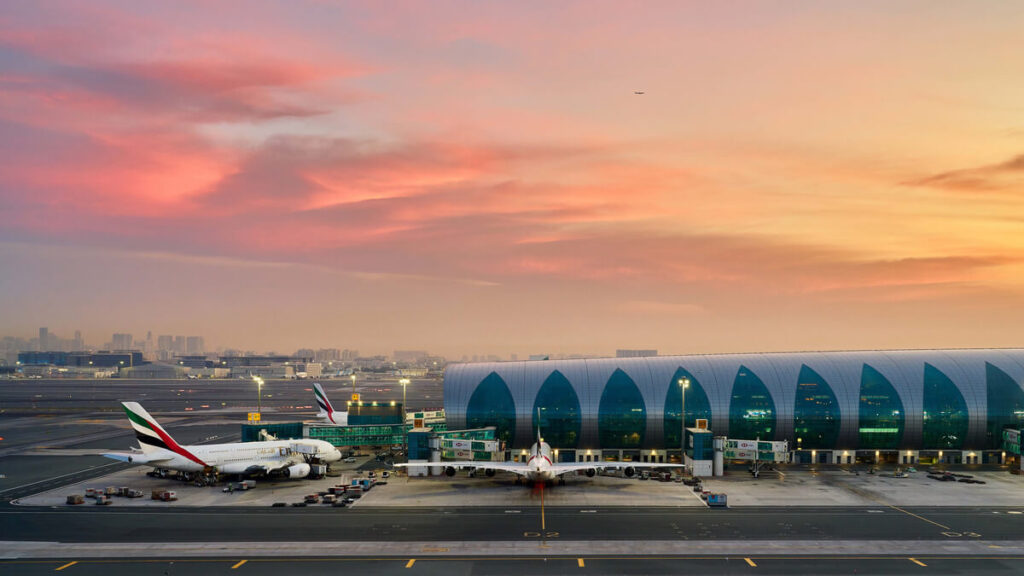During the first half of this year, Dubai International (DXB) welcomed a record 44.9 million visitors, raising the bar on its contribution to Dubai’s economy.
With 8% more visitors year over year, DXB has solidified its place as the world’s most preferred gateway, helped by its robust connectivity to major international markets, and it has reiterated its pivotal role in fostering Dubai’s economic expansion.
In the first half of 2024, 9.31 million foreign visitors came to Dubai, a sign of the city’s growing popularity as a global center for talent, businesses, and investors. The Department of Economy and Tourism in Dubai recently released these figures, which are in line with the growth of the city’s GDP, which increased by 3.2% to AED 115 billion in the first quarter of 2024.
Paul Griffiths, CEO of Dubai Airports, commented, “The record-breaking performance in the first half of this year highlights our strategic importance as a global aviation hub. Dubai is at the forefront of global cities when it comes to attracting talent, businesses, and tourists from around the world, and we are proud to be the gateway to the city, driving growth and enhancing the airport experience for every guest. Strong demand from key source markets such as India and the gradual but certain resurgence of markets such as China, have been instrumental in our success. We have a very optimistic outlook for the remainder of the year, and we are on track to break records with 91.8 million annual guests forecasted for 2024.”
Established and growing markets
The airport’s continuous success has been greatly influenced by the size and importance of DXB’s established and expanding markets, which include East Asia, Western Europe, South Asia, and the Gulf Cooperation Council. India continues to be DXB’s most popular destination country in the first half of 2024 with 6.1 million passengers, while traffic from China reached 1 million passengers, signifying an 80% increase year over year and a 90% recovery over 2019 levels.
Following India, the United Kingdom (2.9 million visitors), Pakistan (2.3 million visitors), and Saudi Arabia (3.7 million visitors) are the top three destination countries for DXB travelers. Germany (1.3 million visitors), Russia (1.3 million), and the United States (1.7 million visitors) are some other important markets. London, with 1.8 million visitors, Riyadh (1.6 million), and Mumbai (1.2 million) were the top three city destinations.
Dubai’s status as a major international business and logistics hub is further cemented by the fact that DXB is served by 101 international airlines and has connections to 269 destinations in 106 countries.
Key figures
There were 216,000 flight movements in total, which is 7.2% more than there were in the first half of the previous year. With 7.9 million visitors, January was the busiest month. With a 6.7% year-over-year increase to 39.7 million bags handled in the first half of the year, DXB handled the most baggage of any airline in the history of the period. Impressively, 92% of all arriving baggage was delivered to passengers ending at DXB within 45 minutes of the aircraft arriving on stand, demonstrating the airport’s dedication to operational excellence.
In comparison to H1 2023, the average number of guests per aircraft movement was 213, and the load factor stayed constant at 77%. Transfer traffic made up 44% of the total, with direct traffic accounting for 56% of the total—a slight increase. In the meantime, the airport saw 21.8 million visitors in the second quarter of 2024—a 7.5% increase over the same period the previous year—and 107,000 total movements were registered.
Enhancing the guest experience
Innovations will be introduced in the upcoming months as part of Dubai Airport’s ongoing efforts to improve the visitor experience, with an emphasis on operational excellence and seamless travel experiences. These include an advanced queue management system, a new signature scent in Al Majlis to create a welcoming atmosphere befitting the VIP facility, and color-coded parking lots for easier navigation.
DXB’s real-time monitoring system helps the airport anticipate and stop lines from forming at various touchpoints, making the travel experience more efficient and seamless for all visitors. In the first half of the year, 98% of visitors waited less than 10 minutes at the departure passport control and less than 15 minutes at the arrival passport control. 95% of visitors who went through security screening on their way out waited under three minutes.
